00:39
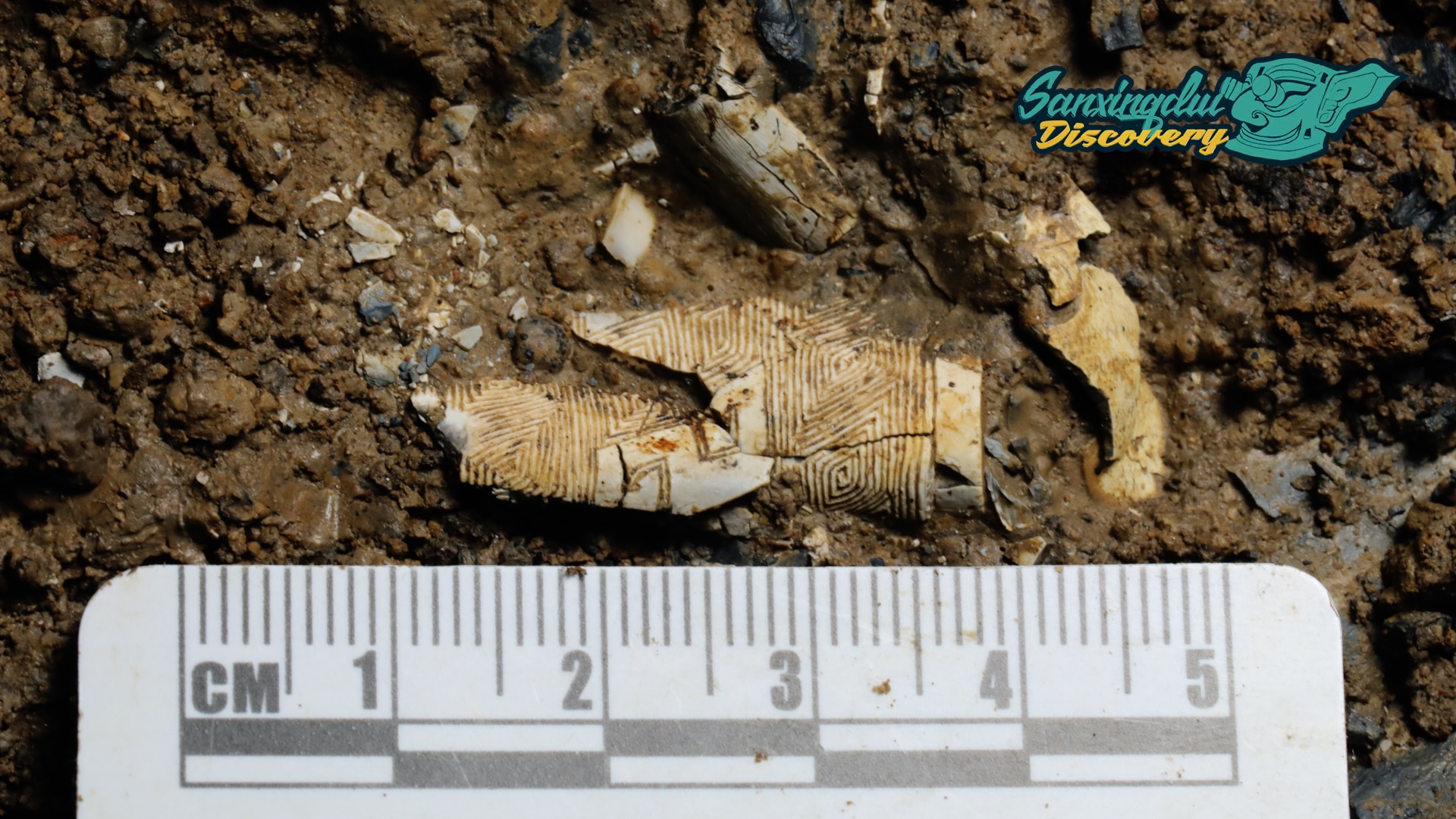
Chinese archaeologists announced on Saturday that some new major discoveries have been made at the legendary Sanxingdui Ruins site in southwest China, helping shed light on the cultural origins of the Chinese nation.
Archaeologists have found six new sacrificial pits and unearthed more than 500 items dating back about 3,000 years at the Sanxingdui Ruins in Sichuan Province, the National Cultural Heritage Administration (NCHA) announced in the provincial capital Chengdu.

Chinese archaeologists announce important new discoveries made at the Sanxingdui site in a conference held in Chengdu, capital city of southwest China's Sichuan Province, March 20, 2021. /Sanxingdui Museum
Chinese archaeologists announce important new discoveries made at the Sanxingdui site in a conference held in Chengdu, capital city of southwest China's Sichuan Province, March 20, 2021. /Sanxingdui Museum
Over 500 precious cultural relics discovered
Ranging from 3.5 to 19 square meters, these six sacrificial pits, which were discovered from November 2019 to May 2020, are in rectangular shape, according to NCHA. Among them, pits No.3, No.4, No.5 and No.6 have been excavated to the utensil layer so far, while pits No.7 and No.8 are being backfilled.
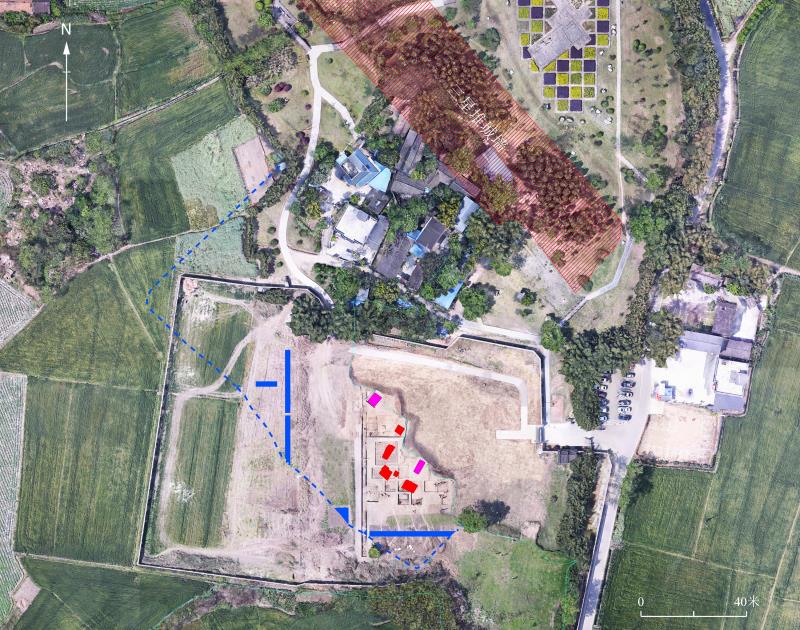
An aerial view of the sacrificial pits found at the Sanxingdui Ruins site in Guanghan City, southwest China's Sichuan Province. /Sichuan Provincial Cultural Relics and Archeology Research Institute
An aerial view of the sacrificial pits found at the Sanxingdui Ruins site in Guanghan City, southwest China's Sichuan Province. /Sichuan Provincial Cultural Relics and Archeology Research Institute
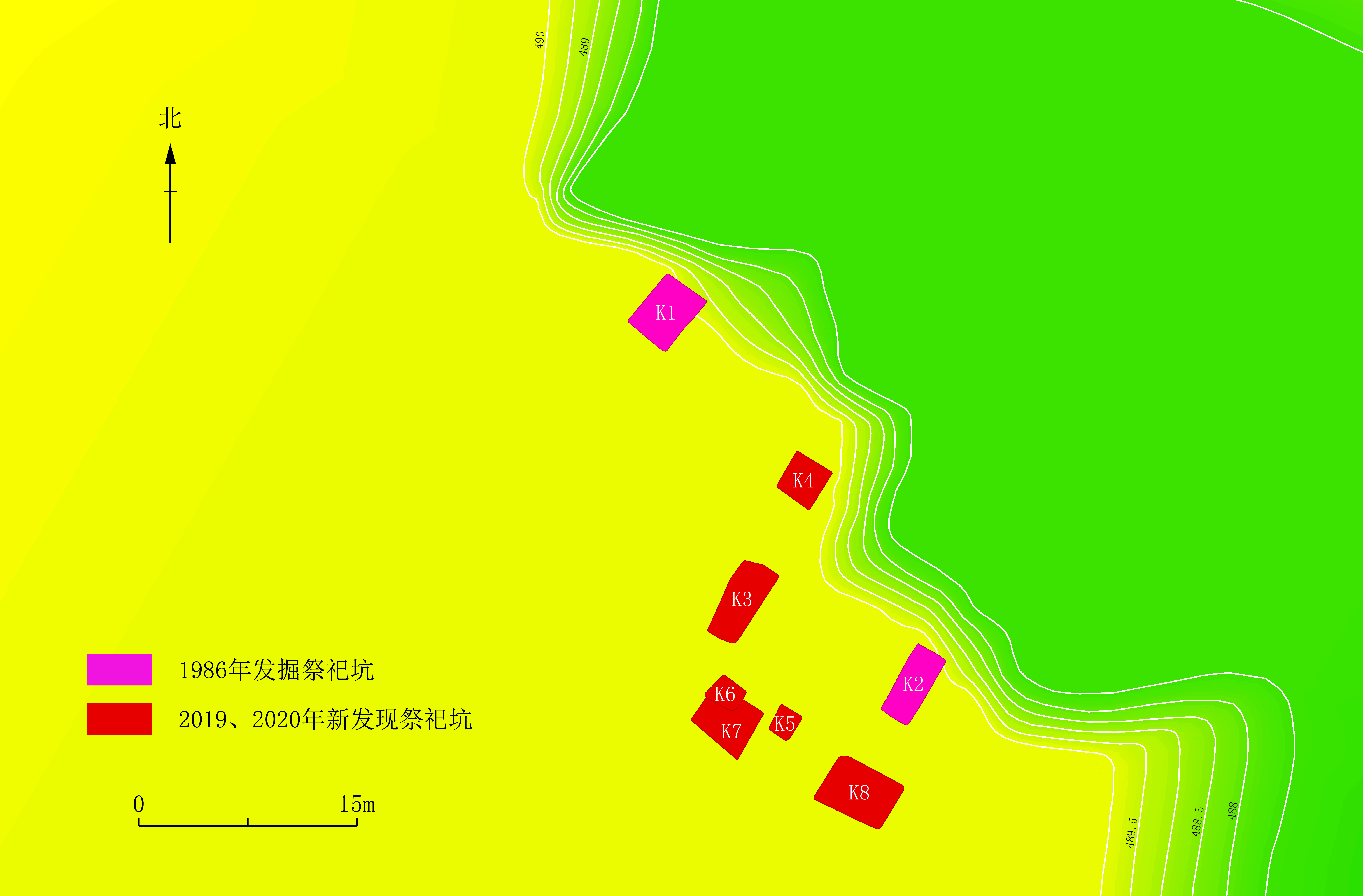
An illustration showing the positions of the eight sacrificial pits at the Sanxingdui Ruins site. Pits No.1 and No. 2 were found in 1986 and the other six were found between 2019 and 2020. Sanxingdui is located in Guanghan City, southwest China's Sichuan Province. /Sichuan Provincial Cultural Relics and Archeology Research Institute
An illustration showing the positions of the eight sacrificial pits at the Sanxingdui Ruins site. Pits No.1 and No. 2 were found in 1986 and the other six were found between 2019 and 2020. Sanxingdui is located in Guanghan City, southwest China's Sichuan Province. /Sichuan Provincial Cultural Relics and Archeology Research Institute
Together they form an area in which people of the ancient Shu civilization offered sacrifices to heaven, Earth and their ancestors, and prayed for prosperity and peace, according to Tang Fei, head of the excavation team at Sanxingdui and chief of the Sichuan Provincial Cultural Relics and Archaeology Research Institute.
The discoveries have shown the distinctiveness of the Shu civilization and the diversity of the Chinese civilization, said Ran Honglin, another researcher with the institute.
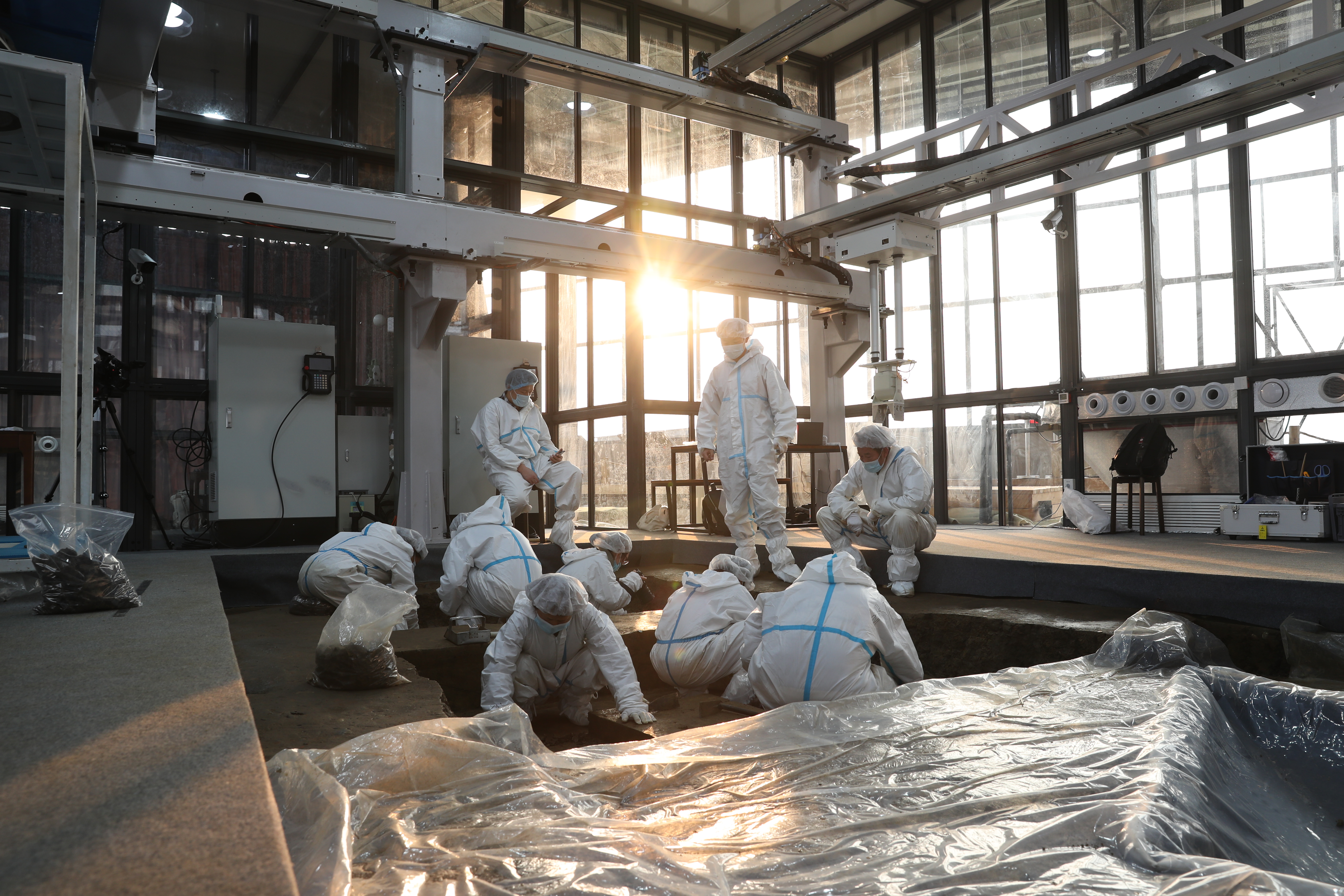
An archaeological excavation cabin is built at the Sanxingdui site in Guanghan City, southwest China's Sichuan Province. /Sichuan Provincial Cultural Relics and Archeology Research Institute
An archaeological excavation cabin is built at the Sanxingdui site in Guanghan City, southwest China's Sichuan Province. /Sichuan Provincial Cultural Relics and Archeology Research Institute
In addition, over 500 pieces of important cultural relics have been unearthed from these six pits, including the fragments of gold masks, bird-shaped gold ornaments, gold foil, painted bronze head portraits, giant bronze masks, bronze sacred tree, ivory, fragments of exquisite tooth carvings, jade cong and jade tools.
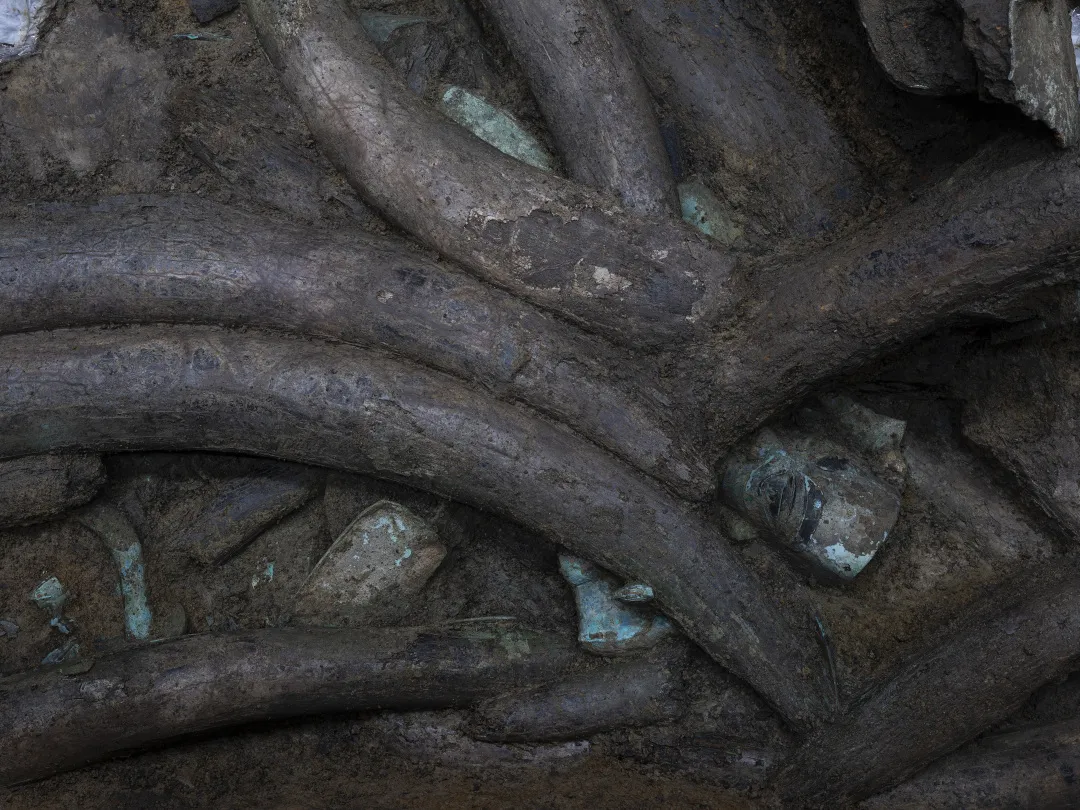
Bronze wares and ivory unearthed at the No. 3 sacrificial pit of the Sanxingdui site in Guanghan City, southwest China's Sichuan Province. /Sanxingdui Museum
Bronze wares and ivory unearthed at the No. 3 sacrificial pit of the Sanxingdui site in Guanghan City, southwest China's Sichuan Province. /Sanxingdui Museum
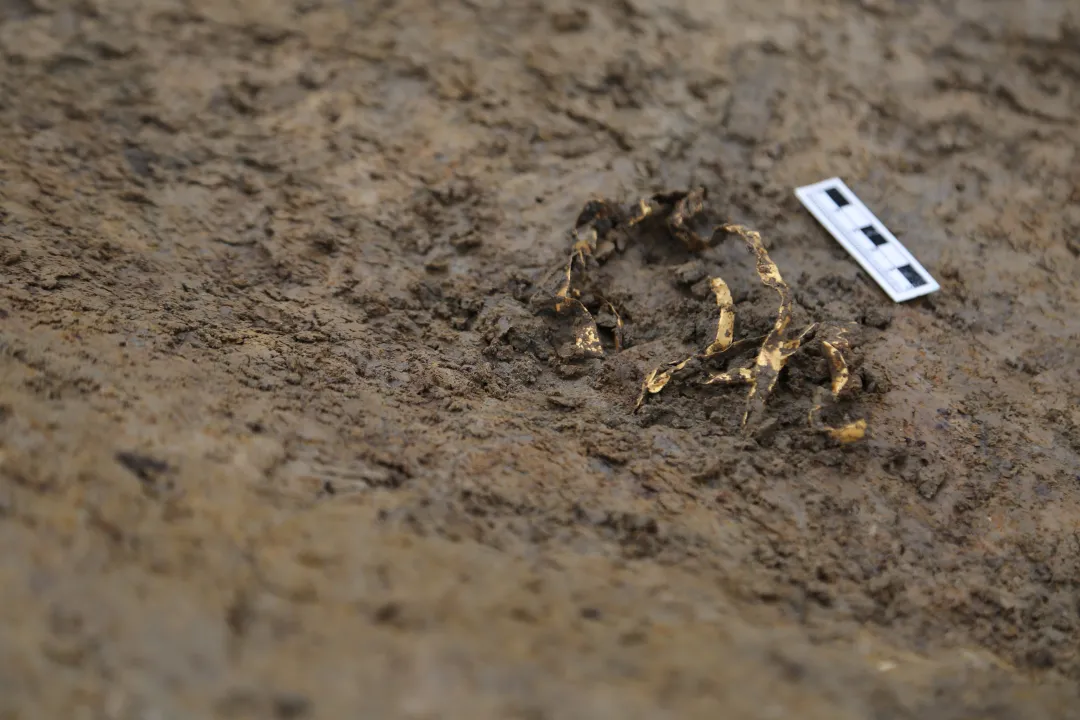
Gold wares unearthed at the No. 4 sacrificial pit of the Sanxingdui site in Guanghan City, southwest China's Sichuan Province. /Sanxingdui Museum
Gold wares unearthed at the No. 4 sacrificial pit of the Sanxingdui site in Guanghan City, southwest China's Sichuan Province. /Sanxingdui Museum
A gold mask has been unearthed at the No.5 sacrificial pit. With an area of about three square meters, it is the smallest pit, but it's where the most gold pieces were unearthed, according to archaeologists.
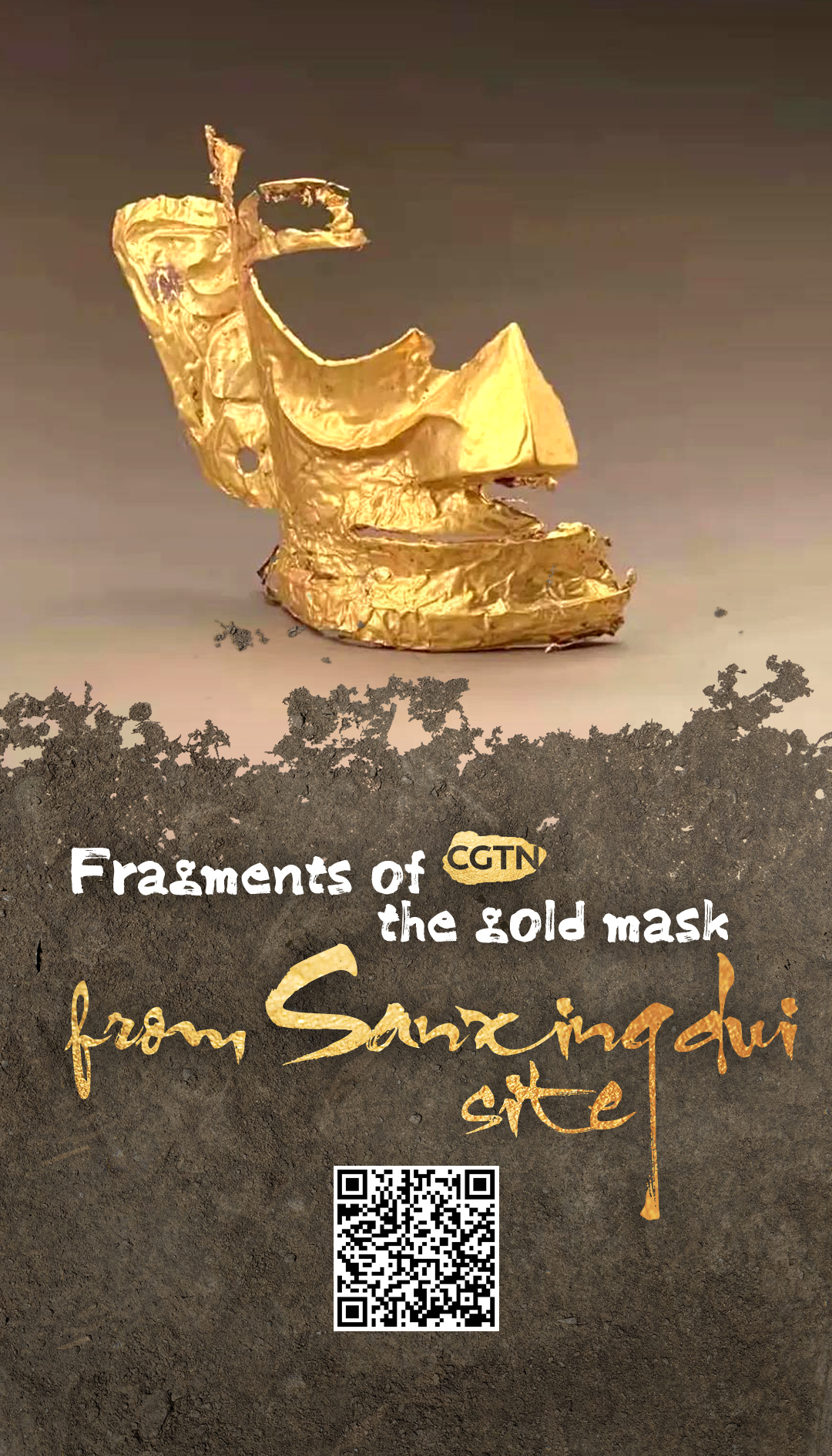
A gold mask unearthed at the No.5 sacrificial pit of the Sanxingdui Ruins site in Guanghan City, southwest China's Sichuan Province. /Sanxingdui Museum
A gold mask unearthed at the No.5 sacrificial pit of the Sanxingdui Ruins site in Guanghan City, southwest China's Sichuan Province. /Sanxingdui Museum
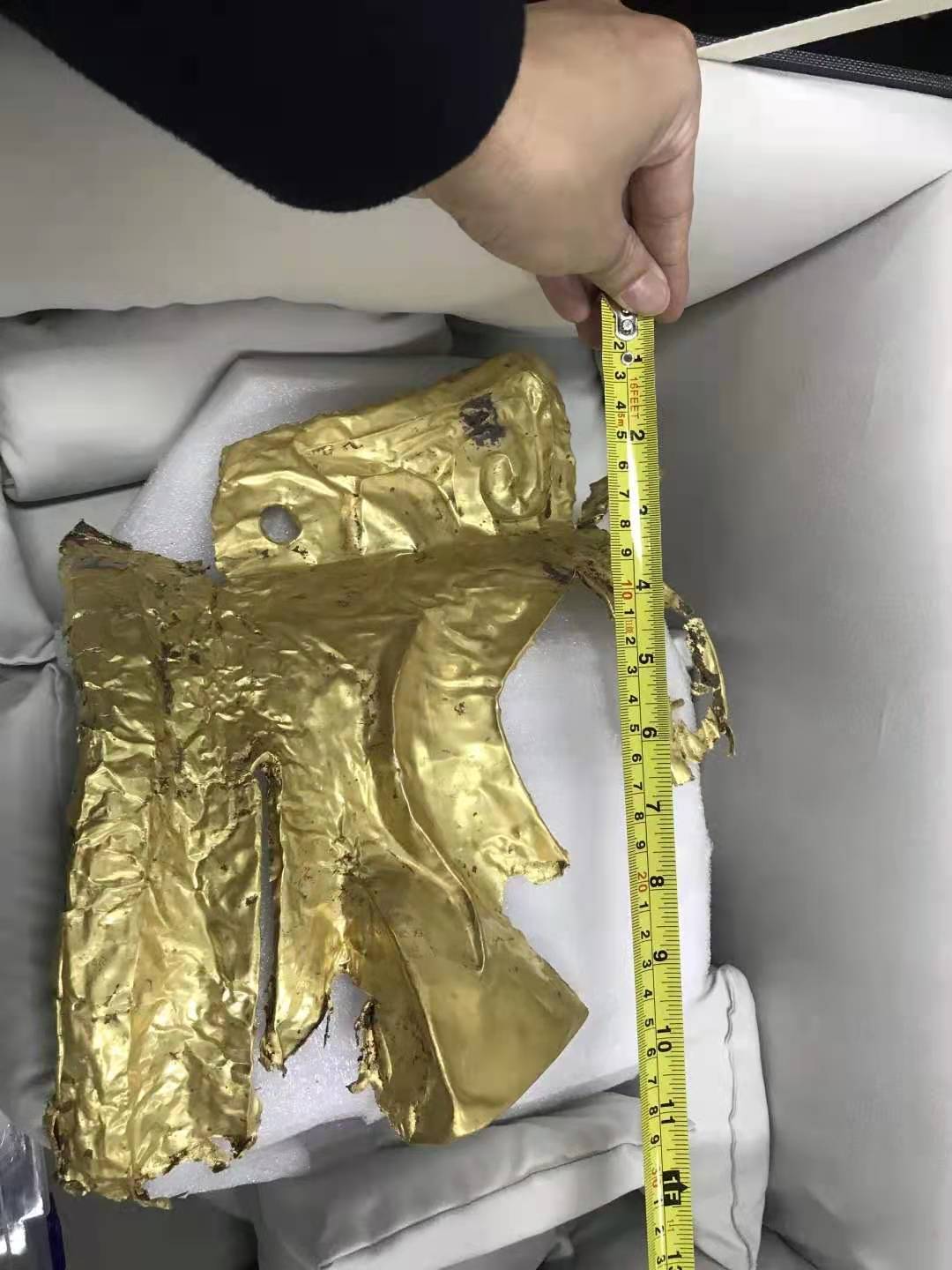
A gold mask unearthed at the No.5 sacrificial pit of the Sanxingdui Ruins site in Guanghan City, southwest China's Sichuan Province. /Sanxingdui Museum
A gold mask unearthed at the No.5 sacrificial pit of the Sanxingdui Ruins site in Guanghan City, southwest China's Sichuan Province. /Sanxingdui Museum
During the process, archaeologists have made full use of modern scientific and technological means to build an archaeological excavation cabin, integrated excavation platform and multi-functional excavation operation system.
With the support of professional teams of multiple disciplines and institutions, they have formed an integrated work mode combining traditional archaeology, laboratory archaeology, technological archaeology as well as the protection of cultural relics. The combination will ensure the high quality and high level of archaeological work, NCHA said at the conference.
"The major findings will help enrich our understanding of the Sanxingdui culture as well as the regional culture in the Yangtze River basin," said Song Xinchao, deputy head of NCHA.
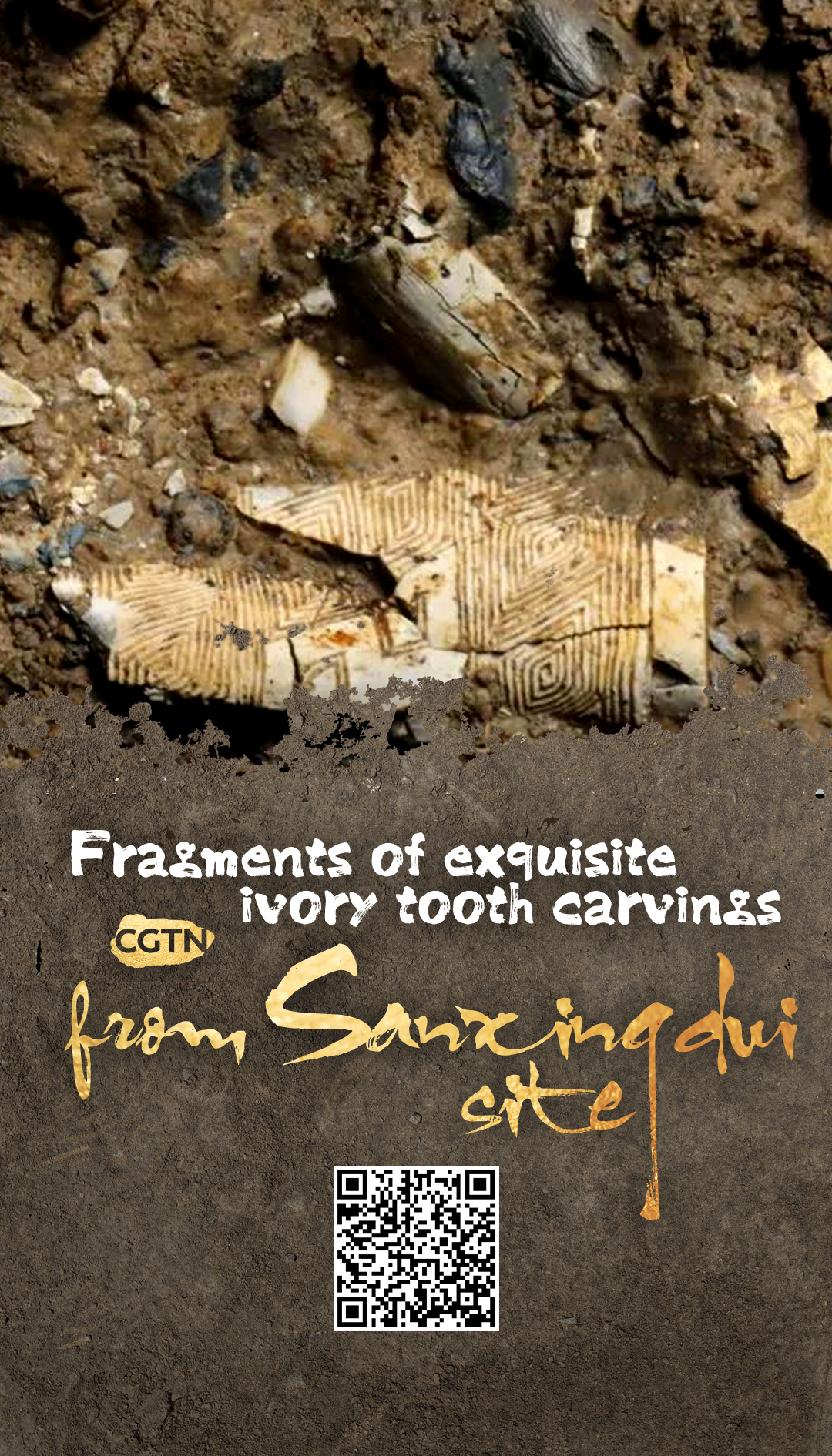
Ivory fragments found at the No. 5 sacrificial pit in Sanxingdui Ruins in Guanghan City, southwest China's Sichuan Province. /Sichuan Provincial Cultural Relics and Archeology Research Institute
Ivory fragments found at the No. 5 sacrificial pit in Sanxingdui Ruins in Guanghan City, southwest China's Sichuan Province. /Sichuan Provincial Cultural Relics and Archeology Research Institute
Meanwhile, the NCHA has identified the "Research on the Civilization Process of Bashu in Sichuan-Chongqing Region" as a major program of the "Archaeological China" project, aiming to conduct in-depth study on the evolution of civilization in the region and its integration into the overall cultural landscape of the pluralistic unity of the Chinese nation.
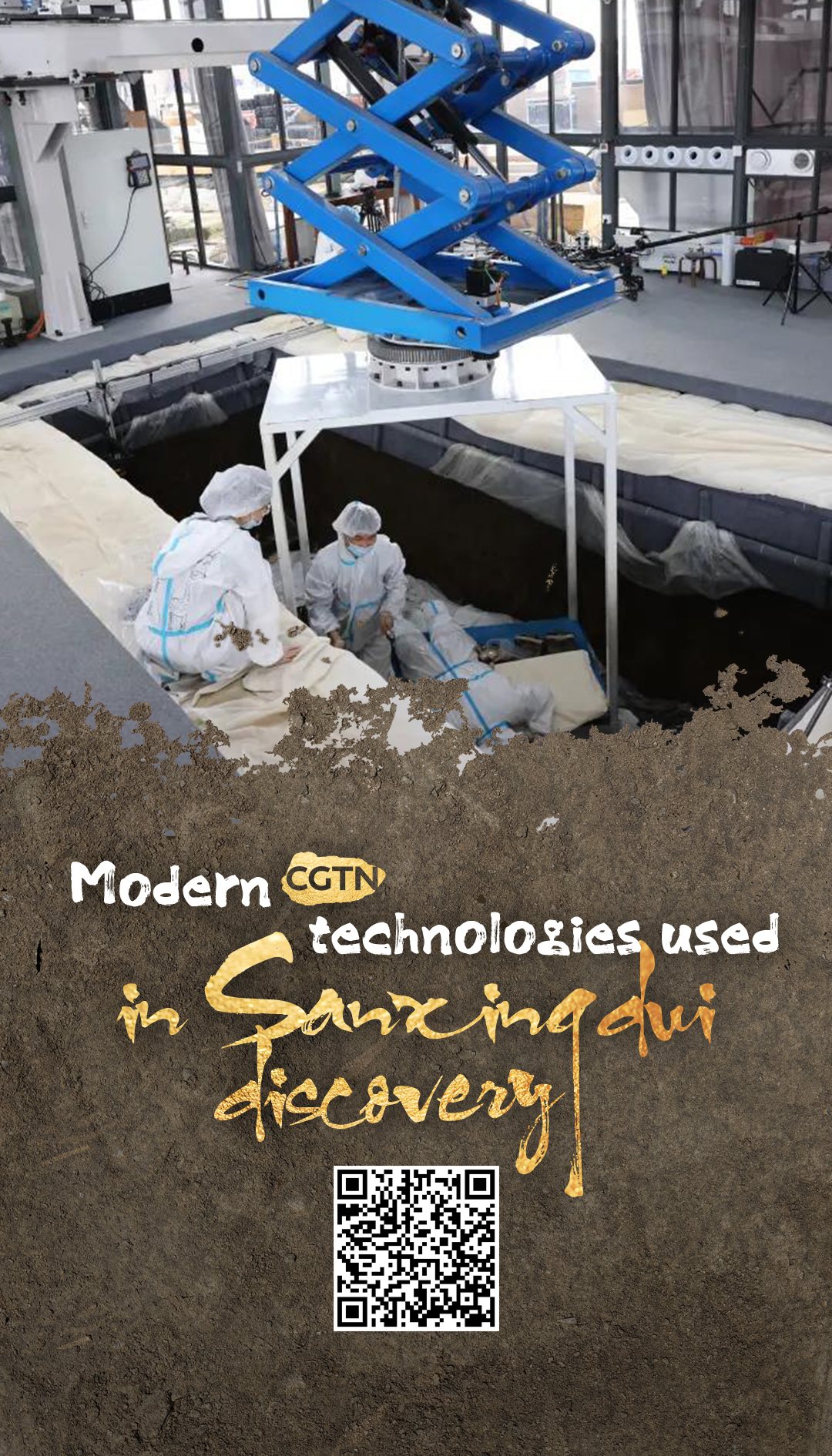
Archaeologists work at the excavation cabin built at the Sanxingdui site in Guanghan City, southwest China's Sichuan Province. /Sichuan Provincial Cultural Relics and Archeology Research Institute
Archaeologists work at the excavation cabin built at the Sanxingdui site in Guanghan City, southwest China's Sichuan Province. /Sichuan Provincial Cultural Relics and Archeology Research Institute
Located in the city of Guanghan, some 40 kilometers from Sichuan's provincial capital Chengdu, the Sanxingdui Ruins site is regarded one of the most important archaeological discoveries in the 20th century. The excavation has lasted for nearly 100 years since the first discovery in the late 1920s.
In 1986, archaeologists found two large-scale sacrificial pits dating back to the Shang Dynasty (1600-1046 BC). Thousands of rare treasures were discovered from the two pits.
(With input from Xinhua)
(Posters designed by Li Jingjie)

